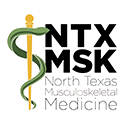Shoulder Pain
What is Shoulder Pain?
Shoulder pain refers to any discomfort or pain experienced in the shoulder area, which includes the shoulder joint, surrounding muscles, tendons, ligaments, and bones. It can range from mild to severe and may be constant or intermittent.
Anatomy of the Shoulder
Your shoulder is made up of three bones- the humerus which is your upper arm bone, the clavicle which is your collarbone, and the scapula which is your shoulder blade. The head of the humerus fits into a rounded socket in your scapula called the glenoid. A specific group of muscles and tendons called the rotator cuff covers the head of the humerus and keeps it attached to your shoulder blade. The rotator cuff provides support and stability to your shoulder joint.
Causes of Shoulder Pain
Shoulder pain can be caused by various factors, such as:
- • Sprains and Strains: A sprain is the stretching or tearing of ligaments (tissues that connect adjacent bones in a joint). It is a common injury and usually occurs when you fall or suddenly twist your shoulder. A strain is the stretching or tearing of muscle or tendon (tissues that connect muscle to bone). It is common during sports. Strains are usually caused by twisting or pulling of the tendons.
- • Tendonitis: Inflammation of the tendons, such as the rotator cuff tendons, can result in shoulder pain, especially with overhead movements.
- • Bursitis: Inflammation of the bursa, small fluid-filled sacs that cushion the shoulder joint, can cause pain and swelling.
- • Arthritis: Osteoarthritis, rheumatoid arthritis, or other forms of arthritis can affect the shoulder joint, leading to pain, stiffness, and reduced range of motion.
- • Shoulder Impingement: This occurs when the tendons of the rotator cuff become pinched or compressed, causing pain and limited movement.
- • Fractures: A fracture is a break in the bone that commonly occurs because of injuries, such as a fall or a direct blow to the shoulder bones.
- • Shoulder Dislocation: A shoulder dislocation is an injury that occurs when the end of the bone is forced out of its position. It is often caused by a fall or direct blow to the joint while playing a contact sport.
Signs and Symptoms
Some of the common signs and symptoms that accompany shoulder pain include:
- • Stiffness
- • Swelling
- • Weakness
- • Instability
- • Numbness or tingling
- • Clicking, popping or grinding sensations
- • Radiating pain
Diagnosis of Shoulder Pain
When you present with shoulder pain, your doctor will review your symptoms and medical history and perform a complete physical examination. An X-ray is ordered to view your shoulder joint and locate the actual cause of pain.
You may also be asked to undergo magnetic resonance imaging (MRI) to evaluate the soft tissues of the shoulder or a computed tomography scan (CT scan) for a better view of the bones.
Treatment of Shoulder Pain
Treatment options depend upon the underlying cause responsible for the shoulder pain. Some of the treatment options offered by North Texas Musculoskeletal Medicine for shoulder pain include:
- • Platelet-Rich Plasma (PRP) Therapy: PRP therapy involves extracting a small amount of the patient's blood, processing it to concentrate platelets and growth factors, and then injecting this PRP into the shoulder joint or affected area. PRP can stimulate tissue repair, reduce inflammation, and promote healing of damaged tissues such as tendons and ligaments.
- • Stem Cell Therapy: Stem cells are undifferentiated cells that have the potential to differentiate into various cell types. In stem cell therapy for shoulder pain, stem cells are often obtained from the patient's own bone marrow or adipose tissue (fat) and then injected into the shoulder joint or affected area. These stem cells can help regenerate damaged tissues and promote healing.
- • Prolotherapy: Prolotherapy involves injecting a solution (often a dextrose solution) into the affected ligaments or tendons in the shoulder. This solution promotes inflammation, which in turn stimulates the body's natural healing response and encourages tissue repair.
- • Extracorporeal Shockwave Therapy (ESWT): ESWT uses shockwaves to stimulate tissue regeneration and reduce pain. It is often used for conditions like calcific tendonitis of the shoulder or chronic shoulder pain.
- • Osteopathic Manipulation (OMT): Osteopathic manipulation, also known as osteopathic manipulative treatment (OMT), can be an effective approach for managing shoulder pain, especially when used as part of a comprehensive treatment plan. OMT techniques for shoulder pain focus on restoring mobility, reducing pain, and improving function in the shoulder joint and surrounding tissues.
